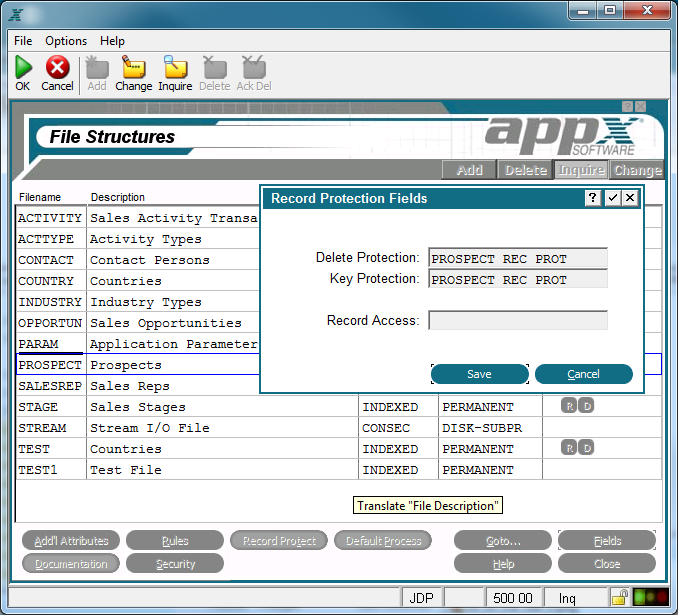Chapter 2-4: Files and Fields |
Files Record Protection Option The Record Protection overlay, shown below, displays when you select the record protection option from the Files/Fields screen. The features in this overlay allow you to prevent users from accessing, modifying or deleting records or record keys.
Files Record Protection Overlay
These fields appear on the Record Protection Overlay:
The Delete Protection field allows you to designate a logic or numeric field for record delete protection. A logic field with a value of 'yes'
The Key Protection field allows you to designate a logic or numeric field for record key protection. A logic field with a value of 'yes' The Record Access field allows you to designate a four-character alphanumeric field for security code. All record accesses upon this file within APPX processes check the contents of this field for access class. If the user does not have rights to the security code stored in this field for the desired record, APPX responds as if the record is not on file. The value in this field must be maintained by the designer and must be four numeric characters. If blank, there are no restrictions. |
Application Design Manual "Powered by Appx Software"1009 ©2006 By APPX Software, Inc. All Rights Reserved |
